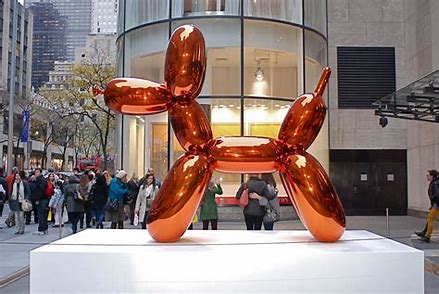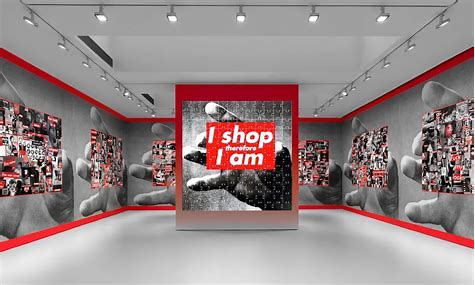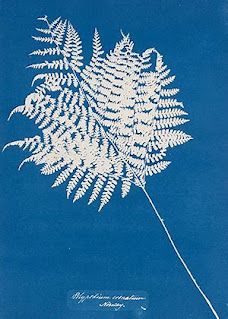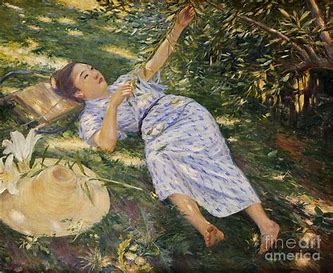Post Modern Blog: Reflections of Consumerism in Art
In our post-modern society, very few things play an as influential role as consumerism does. The products we purchase are infused with greater significance than their primary function. "Our enormously productive economy demands that we make consumption our way of life, that we convert the buying and use of goods into rituals, that we seek our spiritual satisfactions, our ego satisfactions, in consumption. The measure of social status, of social acceptance, of prestige, is now to be found in our consumptive patterns."(Lebow, 1955)
As keen observers of society, artists have responded to consumerism in various ways. They point out its driving forces: capitalism, an unlimited market, mass overconsumption, and money spending. Art has become a commodity that can be created by consumerism, bought and sold, and reflected upon everyday popular objects.
In this week's blog, I would like to present three artists inspired by consumerism and reflecting on it in distinct ways.
1. Jeff Koons (1955 - present) is an American artist most recognizable for his sculptures in contemporary art. His Balloon Dog (orange) is an excellent example of pop art offering a subtle criticism of consumerism. Jeff Koons's sculptures of balloon animals are some of his most recognizable pieces. They are created from stainless steel in mirror finish in various colors and have had overwhelming success. His Balloon Dog (orange) was sold at Christie's Post-war and Contemporary Art evening sale in New York for 58.4 million dollars, a world record-breaking price for a living artist. The sculpture measures 121 x 143 x 45 in. (307.3 x 363.2 x 114.3 cm) and was created from 1994-2000. Most of the sculpture's stainless-steel pieces were made by art fabricator Carlson & CO., a company based in San Fernando, California.

The second sculpture I would like to introduce is the Balloon Dog (yellow) from the Celebration series, displayed on the roof garden at the Metropolitain Museum in 2008. Made from stainless steel and more than ten feet tall, its mirroring and brightly colored surface achieve the impression of a fragile balloon twisted and tied into the shape of a dog. "His choice of objects and images forcefully addresses the impact of class, power, materialism, and consumerism in contemporary life." (Jeff Koons on the Roof, 2008) The Yellow Ballon Dog has the exact measurements as the orange one, is made from precision mirror-polished stainless steel, and is finished with a translucent yellow coating. The forms of both sculptures are fluid and light despite the solid metallic surface. The vivid colors capture the viewer's attention, and the reflective surface plays with the meaning of the word reflection, reflecting the viewers and their memories and emotions from their childhood and happy, worry-free days. A sentimentality that feels strangely displaced with the usual commentary on capitalism and commodification of art in Jeff Koons's creations.

While Jeff Koons took a rather playful approach to consumerism with his Balloon Dog Series, Danish Ahmed displayed a critique and warning of the possible destructive consequences of consumerism penetrating every aspect of our lives. Barbara Kruger sends her warning message through confrontational text and imagery.
2. The second artist I would like to introduce is Danish Ahmed (1970-present). "His work often talks about the hegemony of consumerism and materialism as a crisis of contemporary urban life." (Syed Danish Ahmed, n.d.) Ahmed's digital print Ice Cold Sunshine VI (series) diptych, UV digital print, charcoal, and ink on archival clayboard, 14 x 18 inches, was made in 2022. The work with the paradoxical title Ice Cold Sunshine VI displays trapezoid panels containing dark clouds and leafless tree branches. These natural and geometric elements radically contrast with Coca-Cola bottle imagery. The contrasting colors of black and red, along with the sharp contours of the geometrical forms, reflect the sharp juxtaposition between non-figurative abstract forms and the soda bottle silhouette. In the artist's works, the familiar Coca-Cola silhouette evolves into "a symbol of the modern age" (Khawaja, 2022). Working with images of clouds, trees, geometrical shapes, and Coca-Cola bottle representation, Ahmed creates a sinister, bleak, futuristic atmosphere by clashing nature with consumerism in the form of Coca-Cola bottle aesthetics.

The second work of this artist is Coke Jaali, acrylic on canvas 48 x 48 inches, made in 2002 and displayed in Chawkandi Art Gallery in Karachi, Pakistan. The title Coke Jaali presents a wordplay where the word "jaali" has a double meaning first, the literal (a latticed screen), and the secondary meaning (a cheap reproduction). The painting showcases the jet-black background with vertical white tree branches and Coke bottles morphed into ornamental Islamic religious architectural designs. Once again, the contradicting color palette and flat two-dimensional geometrical form juxtaposition evoke frightening connections between consumerism, religion, and the unpredictable implications of this amalgamation.

3. My third artist is Barbara Kruger (1945 - present), an American conceptual artist collagist, and her panel Untitled (I shop therefore I am) 1987 artwork. It is a single-channel video on LED panel sound 137 7/8 x 137 7/8 inches (350.2 x 350.2) cm. It is currently exhibited at the BROAD in Los Angeles, California. Her artwork Untitled (I shop therefore I am) rephrases the famous phrase of Rene Descartes's principle cogito, ergo sum (I think, therefore I am) in her alarming message of the dangers of consumerism. "Tackling such heavy subjects as consumerism, feminism, and identity politics in art is no small task, but accomplishing this via rendering these subjects into bold and provocative images that recall fashion spreads and mass media imagery is all the more impressive." (Lesso, 2020) Barbara Kruger creates distinctive, red-framed montages of black and white photographs to which she adds short imperative phrases that punctuate her message. Her I Shop Therefore I Am artwork displays a hand stretching forward, holding a red rectangle with a white-lettered slogan in the middle of the installation. The main design element is a rectangle form utilized multiple times in the artwork's structure. The index finger of the hand points at the "I" part of the text. The whole image is surrounded by a red frame, which creates a defined space and visual contrast. The artist's message draws attention to today's society, which is no longer defined by thinking but by overconsumption.

The last artwork in this week's blog is Barbara Kruger's installation Belief+Doubt, presented in the Hirshhorn Museum in Washington, DC, which extends from the lower-level lobby into the museum bookstore. "The entire space—walls, floor, escalator sides—is wrapped in text-printed vinyl, immersing visitors in a spectacular hall of voices, where words either crafted by the artist or borrowed from the popular lexicon address conflicting perceptions of democracy, power, and belief." (Ho, n.d.) The ongoing exhibition addresses many societal issues, with my focus being on the section occupying the bookstore presenting a sharp critique of consumerism with the help of numerous slogans such as "PLENTY SHOULD BE ENOUGH, YOU WANT IT. YOU BUY IT. YOU FORGET IT". The slogans point out the absurdity of our consume-obsessed society where products are being purchased to satisfy consumers' low self-esteem and dissatisfaction with life in the hope of defining their social status by possessions, which fuel an endless drive to acquire more and more belongings. Satisfaction achieved this way is short-lived, and products have to be discarded, and new products must be acquired to keep the mirage of happiness. The installation is created in the artist's signature color palette of black, red, and white. The artist's word and picture fusion imitate advertising but confronts the viewer with social issues and stereotypes. The massive white printed in Futura Bold typeface aphorisms on the bold red and black backgrounds are applied in a three-dimensional space and deploy the message of the written word with dramatical and unsettling force. Using the design elements of different rectangular shapes, colors, and sizes, the artist created a landscape that encourages the viewers to think critically and self-reflect.

Works Cited
“Balloon Dog (Orange).” Christies, 2013, www.christies.com/en/lot/lot-5739099.
“Jeff Koons on the Roof.” The Metropolitan Museum of Art, 26 Oct. 2008, www.metmuseum.org/exhibitions/listings/2008/jeff-koons.
Ho, Melissa. “Barbara Kruger: Belief+Doubt.” Hirshhorn Museum and Sculpture Garden | Smithsonian, hirshhorn.si.edu/exhibitions/barbara-kruger-beliefdoubt/.
Khawaja, Nusrat. “Consumerism, Capitalism, Coca Cola.” The Complete Magazine For The Region SouthAsia, Mar. 2022, southasia.com.pk/2022/03/02/consumerism-capitalism-coca-cola/.
Lebow, Victor. “Journal of Retailing: Price Competition in 1955.” Ablemesh.Uk, 1955, www.ablemesh.co.uk/PDFs/journal-of-retailing1955.pdf.
Lesso, Rosie. “Barbara Kruger: Politics and Power.” TheCollector, 28 Mar. 2020, www.thecollector.com/barbara-kruger/.
“Syed Danish Ahmed.” Karachi Art Directory, karachiartdirectory.com/art-professionals/syed-danish-ahmed/.


This comment has been removed by the author.
ReplyDeleteKoon’s balloon dogs are such a fun, eye-catching piece of art. They definitely invite a sense of nostalgia for the viewer, and I’m sure that’s what drew the buyer to it. I am floored at the price that the orange sculpture sold for though. I suppose the selling price for the sculpture is the very message that is confronting consumerism. I was also struck by Barbara Kruger’s “Belief+Doubt” installation. It is so bold and in your face. The use of a fully wrapped room, feels inescapable and consuming. I think the message comes across so clearly, and the use of color and typeface feels important, like a warning.
ReplyDeleteThe "Balloon Dogs" are really interesting, and I would have never thought that someone would thought of putting them up as a sculpture. The only times I would ever find a balloon dog is during festivals, birthday parties, of in a store, but it's also when people make them in front of me. What I love about the "Balloon Dogs" sculptures are the bright and shiny color it gives. I could only imagine how shiny it would look during a bright sunny day.
ReplyDeleteI never thought of the ballon dogs as “ art” but I guess it’s in the eye of the holders. It definitely brings back memories of birthday parties when I was younger. The last piece reminds me of fashion for some reason. Probably because a lot of clothes have black and red logos like that on them .
ReplyDeleteWho would have thought that a balloon dog would be so expensive $58.4 million, crazy. The size and brightness really causes you to just stare at it for a few minutes. “I shop therefore I am” logo reminds me of Nike logo “ Just Do It” The bright red and black just captures you .
ReplyDeleteI really like the presentation of Barbara Kruger's works, how they are not only interesting to look at but also how they include though provoking messaging with the text. I also find it somewhat ironic how despite Jeff Koon's balloon dogs being a criticism of consumerism they were still sold for a record high at an auction. Thanks for the great post!
ReplyDelete